2014 Chevrolet Impala First Drive: an iconic legend reborn
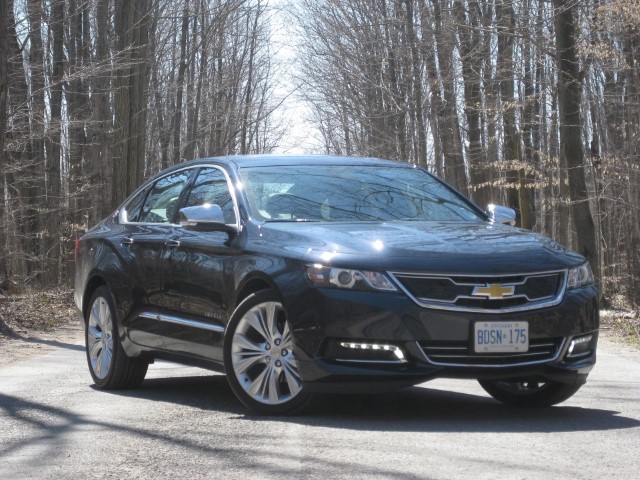
Looking back at the history and tradition of the North American automotive industry, the Chevrolet Impala has definitely left its mark since its inception in 1958. In 1965, its longer, lower and wider shape along with its three taillight trademark catapulted the Impala to an all-time annual sales record of more than one million units in the United States – a record that still stands today.
Over the past decade, the Impala has taken on a non-enthusiastic large sedan persona focused more towards its fleet business. Similar to the Ford Taurus, many Impalas are seen out on their day jobs as taxi cabs or police vehicles, but the new editions will no longer have that on their resume. General Motors wanted to change that culture and mindset and bring the passion back that existed in its heyday in the late 1950s and 60s.
Currently 70 percent of vehicles in the large sedan car market are fleet vehicles compared to 30 percent going to retail. General Motors feel confident that their new 2014 Impala will reverse that trend with 70 percent of Impalas sold going to retail buyers.
You might skeptically ask how’s that possible?
Having no taxi or police packages are a start, but a complete overhaul from the outgoing model is hoping to do the trick.
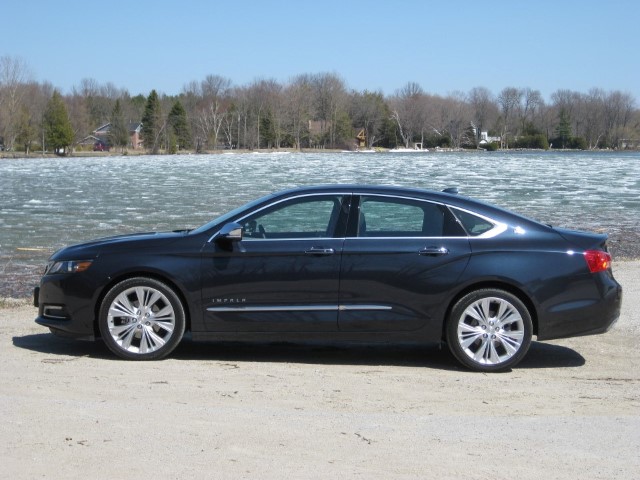
After a brief presentation it was time to venture out and test out the tenth generation 2014 Chevrolet Impala. Let’s start to breakdown the 2014 Impala with its new styling – seems like a good starting point.
There were LTs and LTZs (base level is the LS) available for this first drive and of course I had to have the top-of-the-line LTZ. The only external difference between the two is in the grille where you will find a solid black bowtie surrounding the customary bowtie centered on the grille. Surprisingly that extra bowtie is actually for the adaptive cruise control function, an option on the LTZ version, so you will find some LTZ’s without this sharp-looking addition.

The exterior grabs your attention and makes you question whether this 2014 model is really an Impala. The new sculpted body lines stand out the most and smacks of speed and aggression emulating the smooth but quick running and leaping ability of the Antelope where its name derived. If the body lines set the tone for the Impala – the low profile projector-beam HID headlights and LED daytime lights standard on LTZ models set the mood.
Just when you think the overhaul is done the LTZ is fitted with 19-inch wheels (18-inch wheels are standard an upgrade from the 16-inch wheels in the outgoing model) that seem to fit the re-incarnation just well. To cap it off, Chevy added a little historical touch by crafting arched rear fenders resembling the old Impalas we used to love.
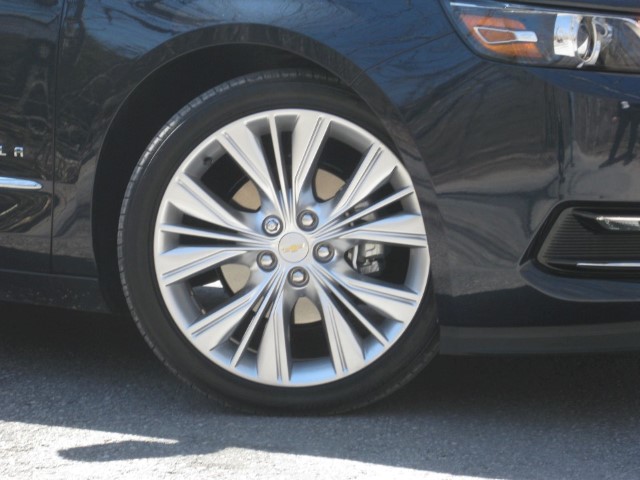
The exterior warms you up for the interior design and comfort as you take your seat. You’re greeted with comfortable soft-leather seats along with space, space, and more space. Well I guess that’s how it should be in a full-size sedan. Spaciousness has increased all-around with 45.8-inches of front legroom (an increase of 3.5-inches) and 39.8-inches of rear legroom (an increase of 2.2-inches). If you have a taller frame you might find headroom in the back seat to be slightly challenging, otherwise, just sit back, spread your legs out and enjoy the smooth ride.
Not that it needed any more trunk space, but the Impala has increased its truck space from 18.6 cu-ft. to 18.8 cu.-ft. to edge a bit closer to its main rival, the Ford Taurus, the only competitor with more junk in its trunk.
Another thing that Chevrolet was excited to talk about was its MyLink interface that’s set to make its debut in the new Impala. This latest version of MyLink is an eight-inch upgraded touchscreen version of the Cadillac Cue that includes mainstream features such as navigation, Bluetooth, SIRIUS satellite radio, and a rear-view camera. What makes it more interesting is that it also provides you natural voice recognition, 3-D mapping, gesture recognition where you can swipe, click and drag the touchscreen similar to an iPad, and a valet mode to secure your contacts and information.
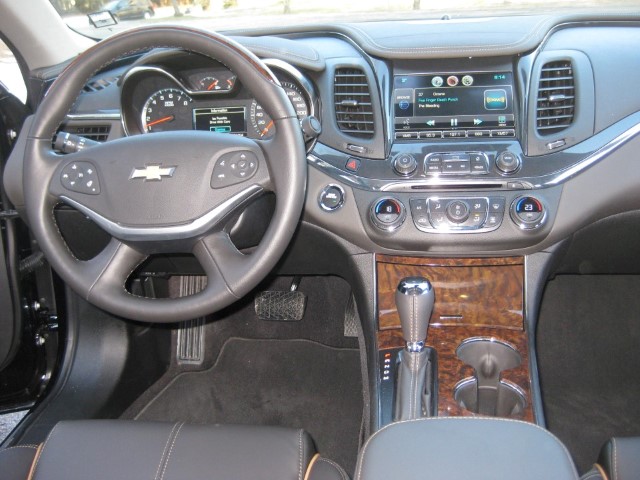
MyLink is a nice addition that modernizes the Impala and adds some much needed connectivity and excitement. I did find it to be a bit slow in comparison to other interfaces, especially with its navigation, but at least it’s easy to understand. The knobs and buttons below the touchscreen help to simplify and quicken any request from audio to climate control.
Just like in any James Bond car there’s a secret storage compartment behind the MyLink touchscreen. All you have to do is press a button and the touchscreen lifts for you to store any precious items. It even has an additional USB port if needed. A little strange to find that in an Impala, but if you can add it – why not?
The Impala comes with three engine choices (2.5L 4-cylinder engine with intake valve lift control, a 2.4L 4-cylinder eAssist and a 3.6L V-6 with direct injection) and in three trim levels (LS, LT and LTZ). The 3.6L engine was the only one off the production line so I can only comment on that one. The 2.5L engine will be the only option for the base LS, but you will have a choice in both the other trim levels.
The 3.6L V-6 LTZ tester provides you all the power you need with 305 hp and 264 lb.-ft. of torque. Power is not a typical standout feature in a full-size sedan, but it’s nice to see that Chevy gave its top trim a boost surpassing the numbers of both the Ford Taurus (290 hp and 255 lb.-ft. of torque) and the Dodge Charger (292 hp and 260 lb.-ft. of torque). The Impala only comes in front-wheel drive and has a six-speed automatic transmission with manual shifting modes.
The Impala has a smooth confidence to it while driving on regular suburban roads all the way to the country roads of Haliburton, Ontario. The engine is so quiet I could hardly tell how fast I was going and that’s a tribute to not only the quietest Impala ever, but the quietest Chevrolet ever assembled. Statements like that are hard to measure, but along the drive route there were several railroad tracks crossed and I can tell you first hand that noise and vibration were at a minimum. Acceleration was quick and seamless and the steering was precise – a true joy to drive.
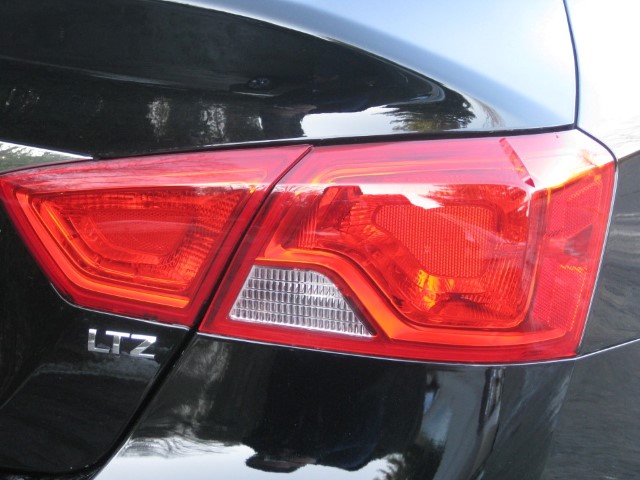
Fuel efficiency numbers have slightly improved from the outgoing model. The Impala was rated at 11.1 L/100 km in the city and 6.9L/100 km on the highway for a combined 9.2L/100 km. My country road drive surprisingly came in at 8.1L/100km – not bad and in line with the Ford Taurus, but inferior to the Toyota Avalon.
The 2014 Impala are scheduled to go on sale very shortly starting at a price of $28,445 for the LS (cheapest in its segment) all the way up to the 3.6L LTZ I tested at $39,645. Just be wary of other options such as navigation and adaptive cruise control. They might be a tempting addition, but that will get you quickly up there in price and you don’t want to be spending $45,000 on an Impala.
The middle LT model with the 2.5L 4-cylinder engine looks to be the go-to choice by many starting at a reasonable price of $31,445 and comes standard with 18-inch aluminum wheels, leather wrapped steering wheel and shift knob, as well as the MyLink infotainment system.
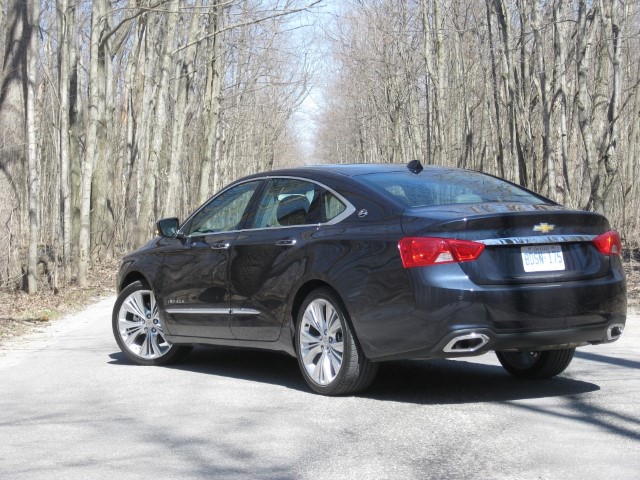
After plenty of city, highway and country road driving – it’s pretty clear that General Motors has accomplished their goals with the tenth generation 2014 Chevrolet Impala. It’s transformation from a lacklustre fleet vehicle to a stimulatingly sculpted vehicle rekindled memories of days gone by. Chevrolet has done a remarkable job in providing the perfect balance of power, driving smoothness and comfort. Add in the modernization of the interior and the Impala is re-born. It will take some time for some consumers to change their pre-existing notions, but a complete overhaul was the proper start.
- 0
- Published in CAR REVIEWS
- Written by David Miller


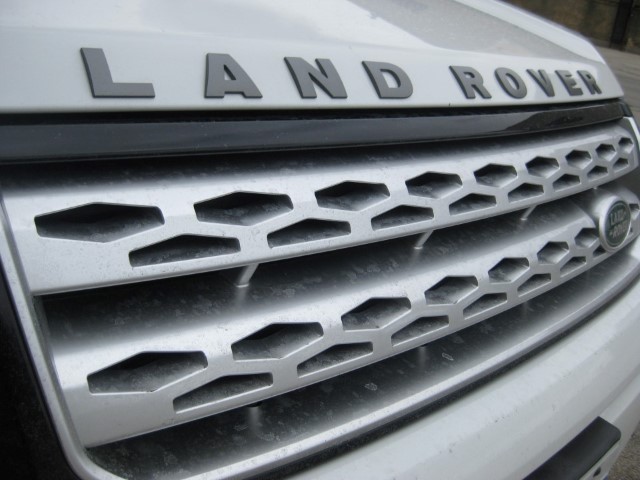
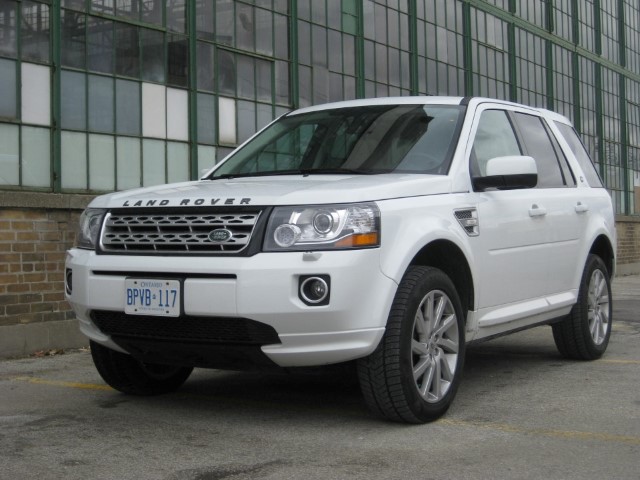
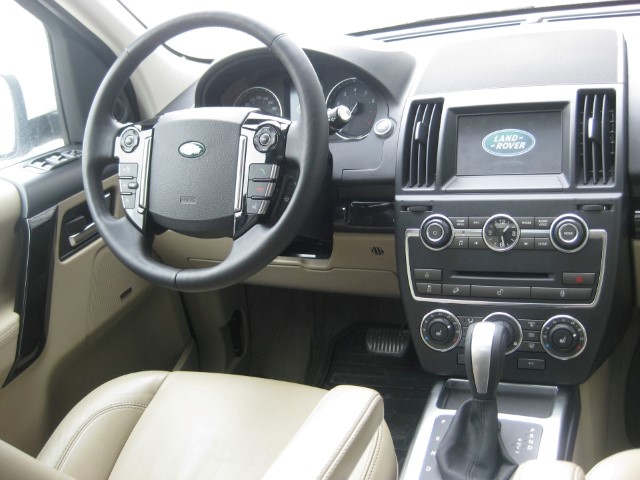
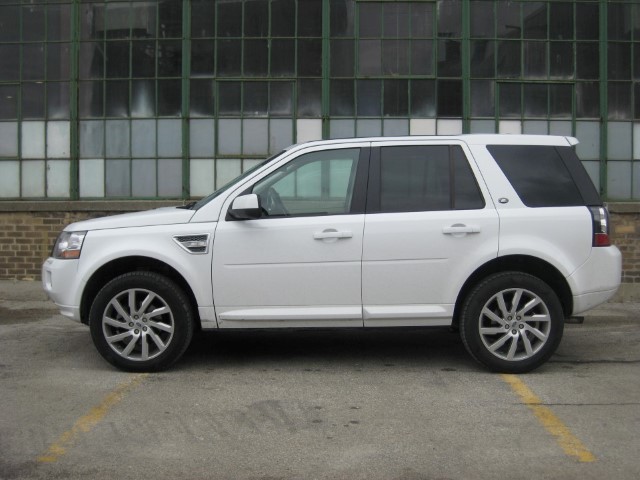
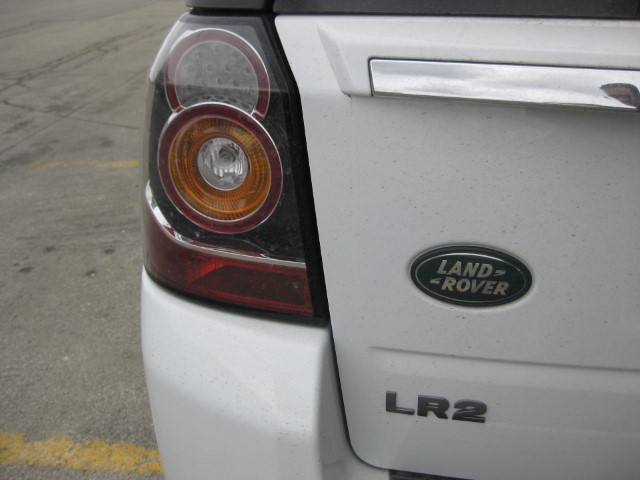
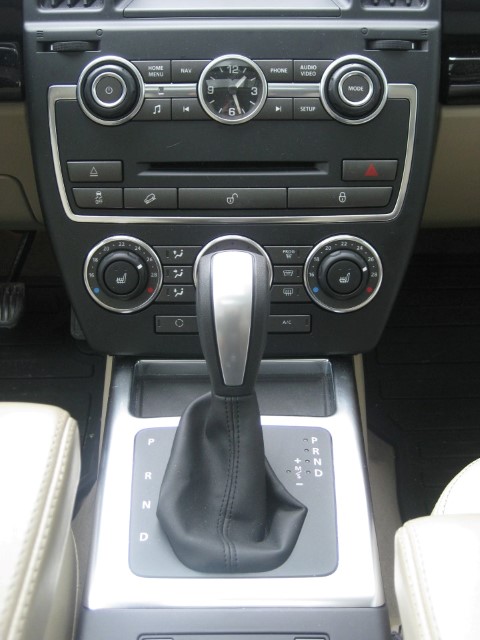
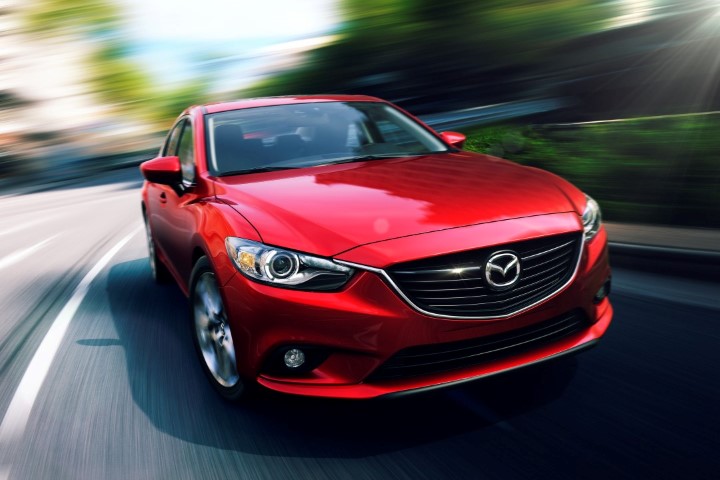
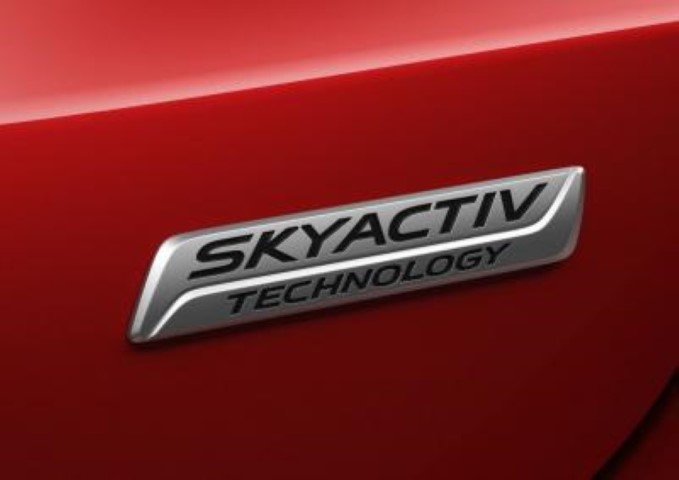
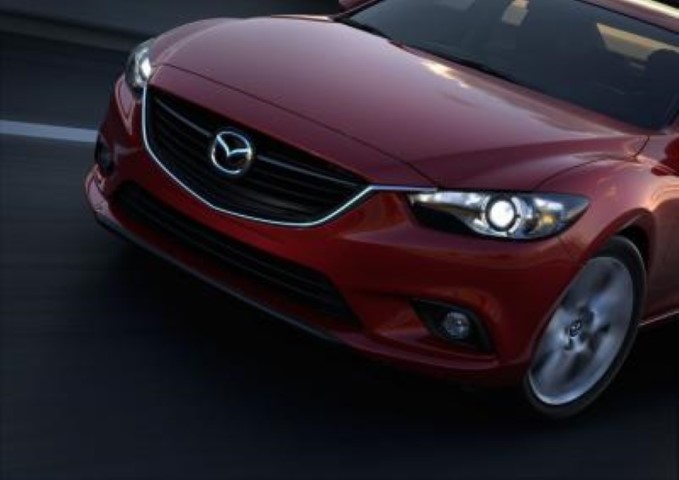
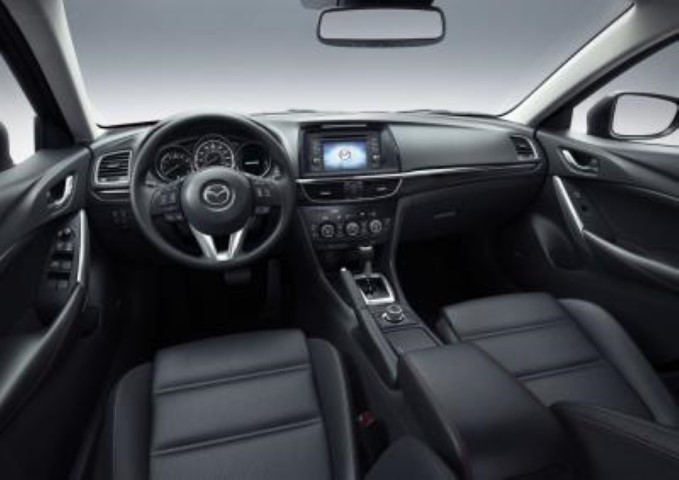

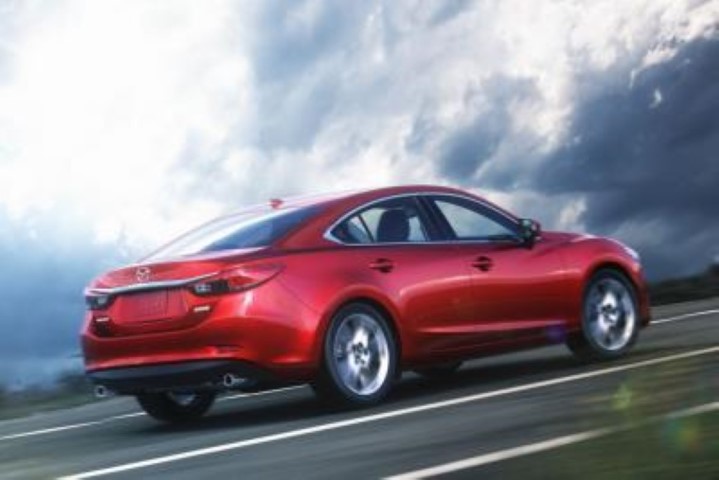
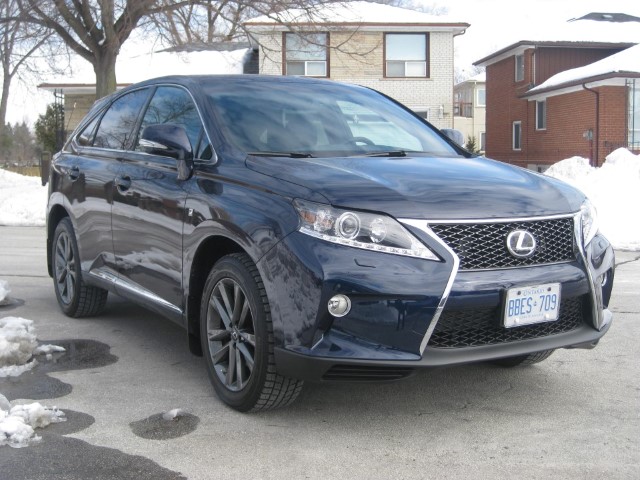
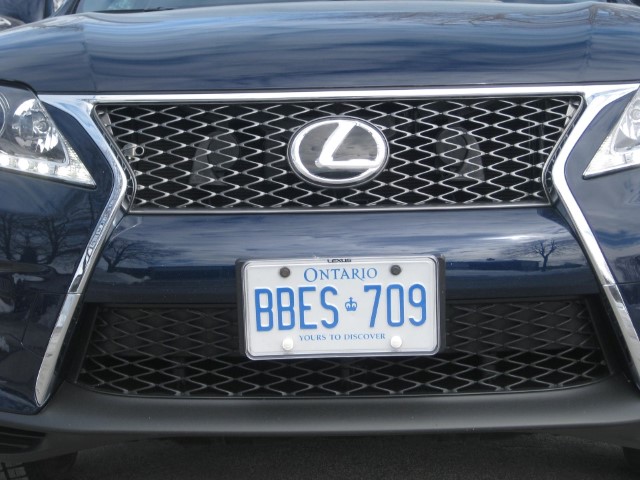
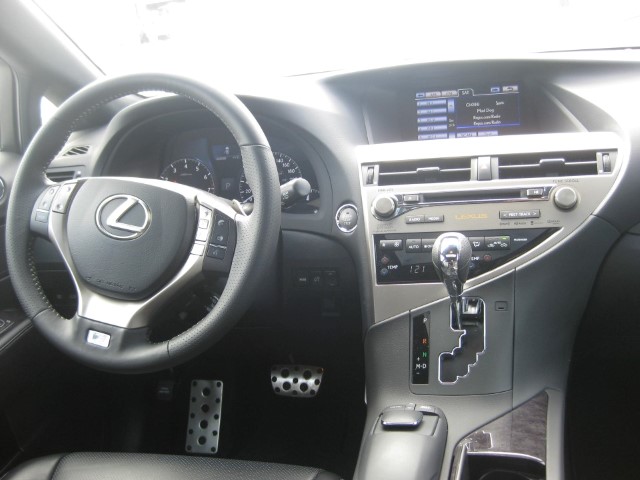
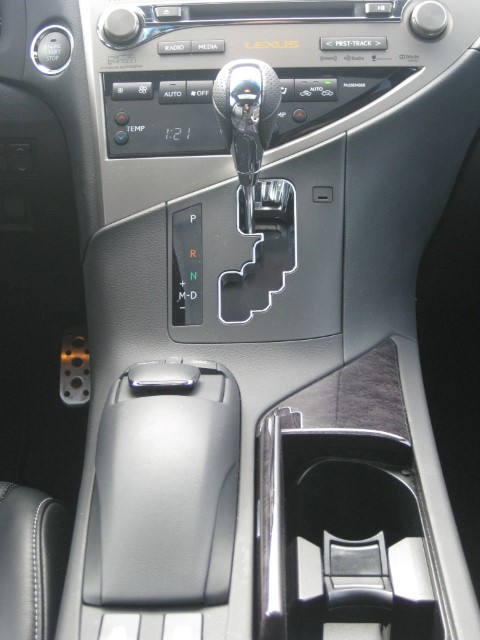
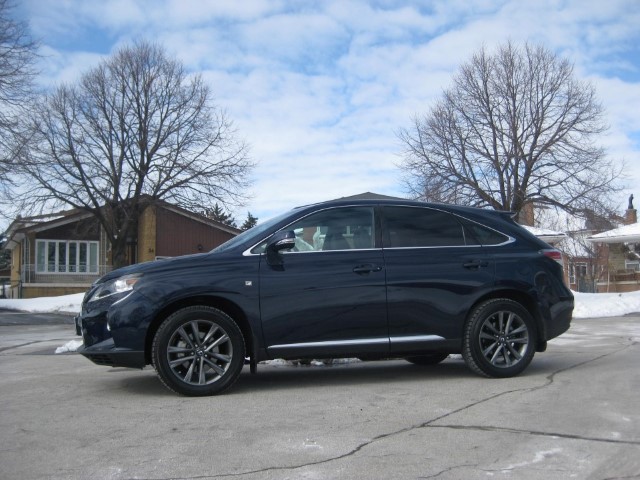
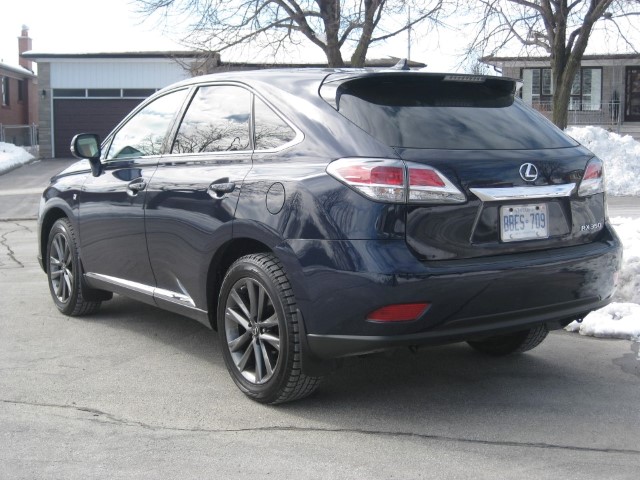
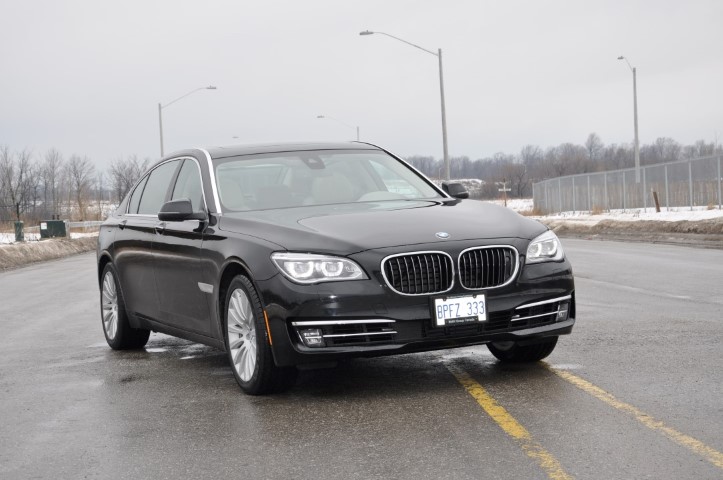
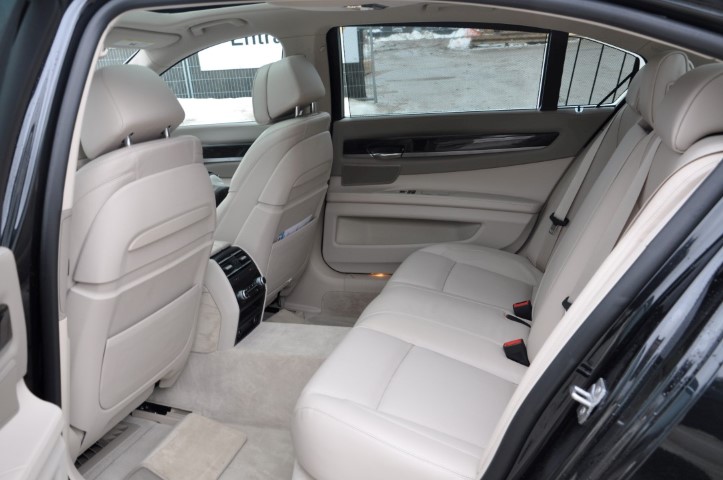
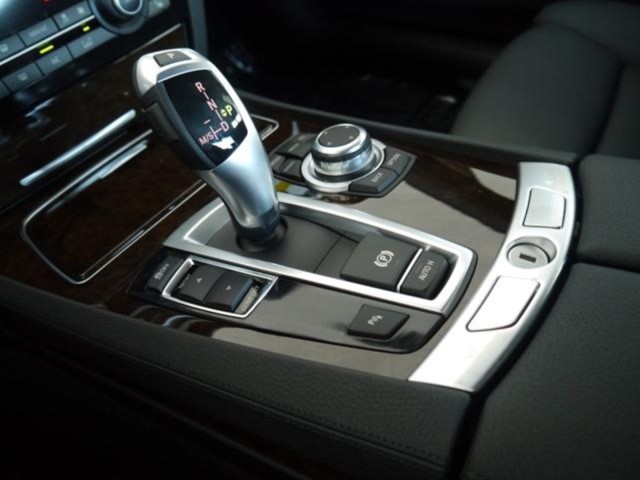
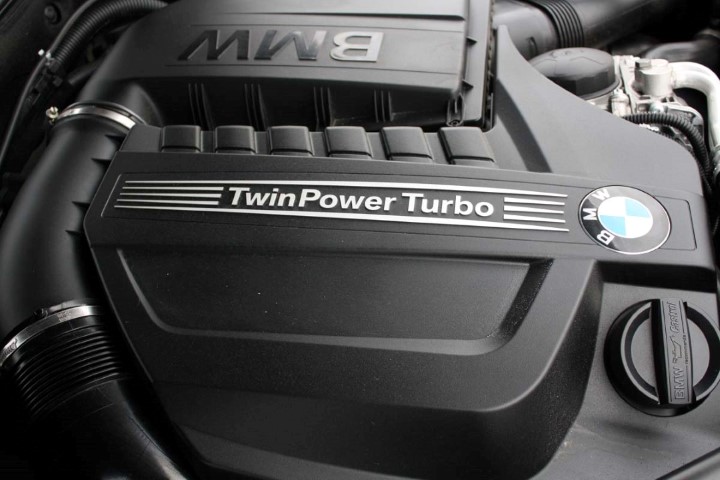
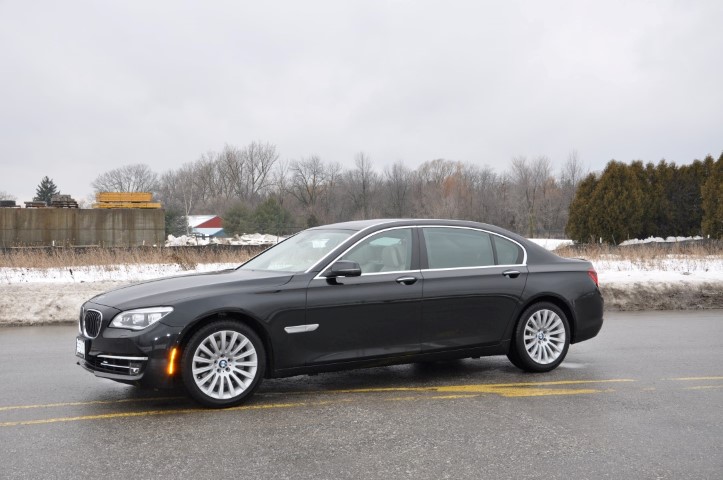
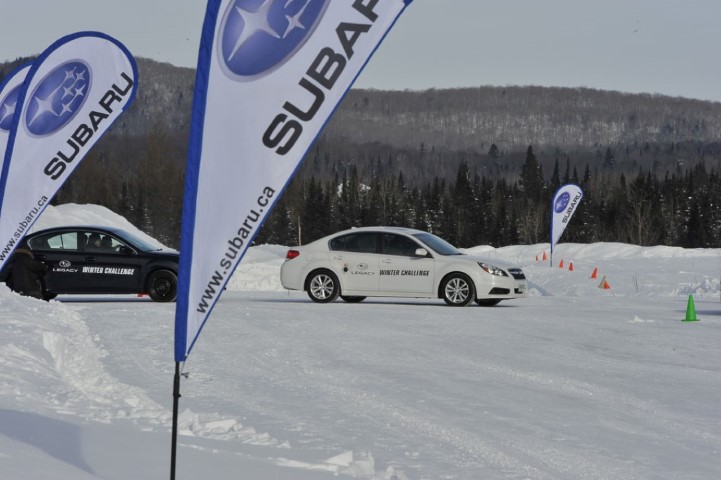 Mecaglisse, QC – When it becomes freezing cold outside, we tend to stay indoors as much as possible. Who wants to deal with the wind, snow, and icy roads? At times it doesn’t seem worth it, but when Subaru called to test out their Subaru Legacy in -30C weather, I got excited to attack these conditions head-on.
Mecaglisse, QC – When it becomes freezing cold outside, we tend to stay indoors as much as possible. Who wants to deal with the wind, snow, and icy roads? At times it doesn’t seem worth it, but when Subaru called to test out their Subaru Legacy in -30C weather, I got excited to attack these conditions head-on.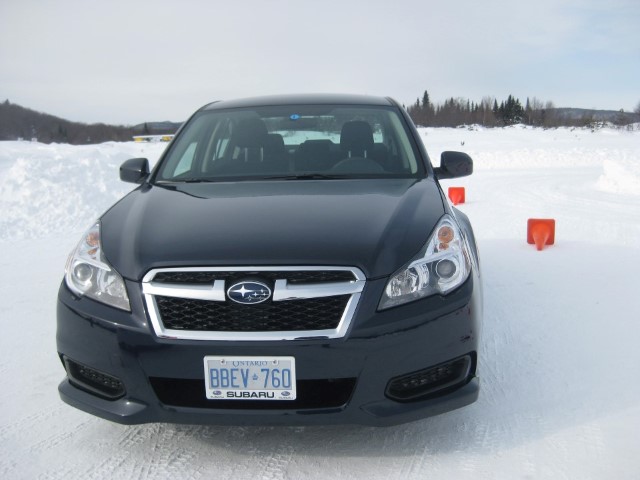
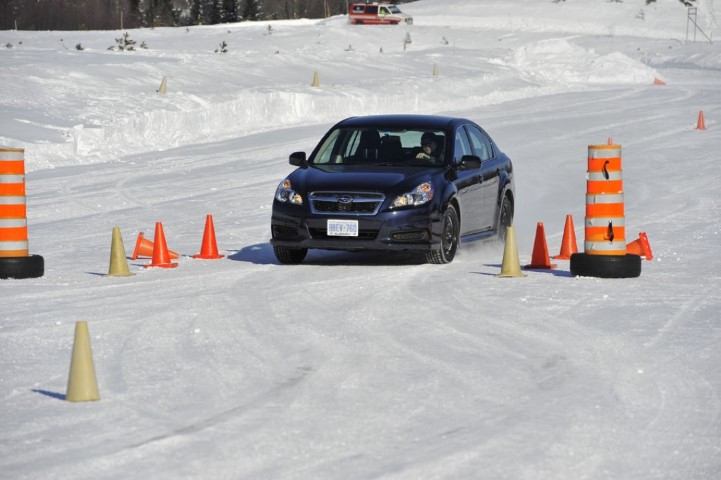

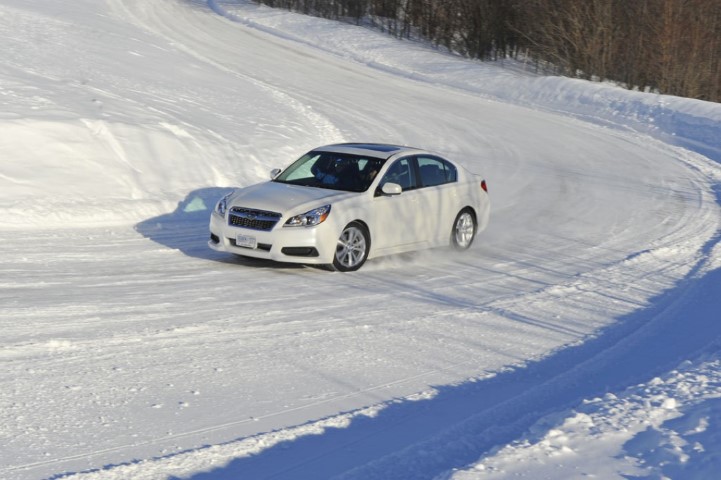
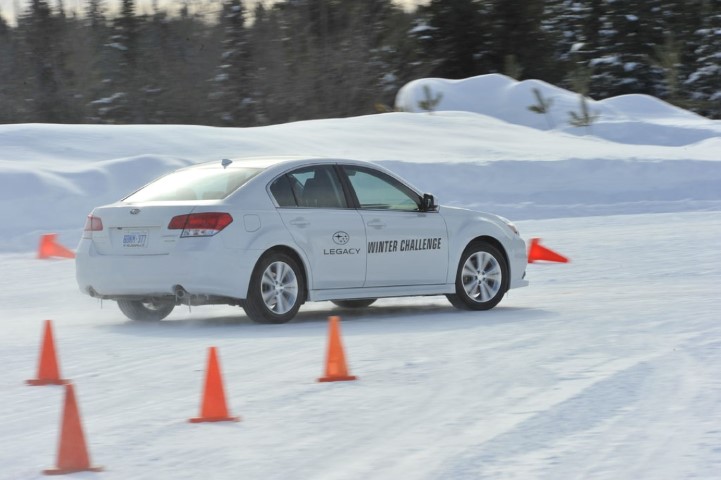
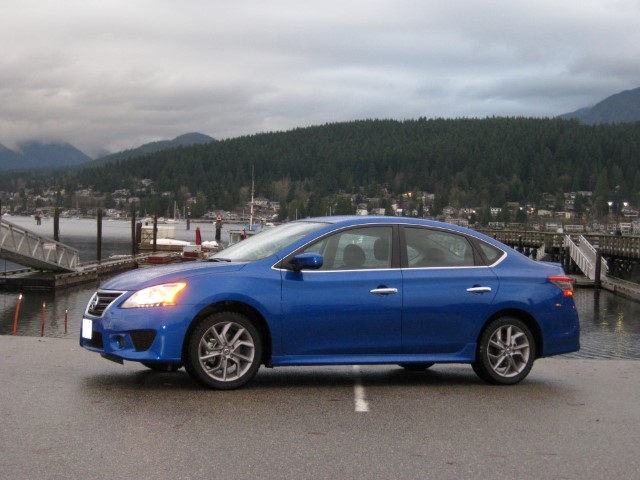
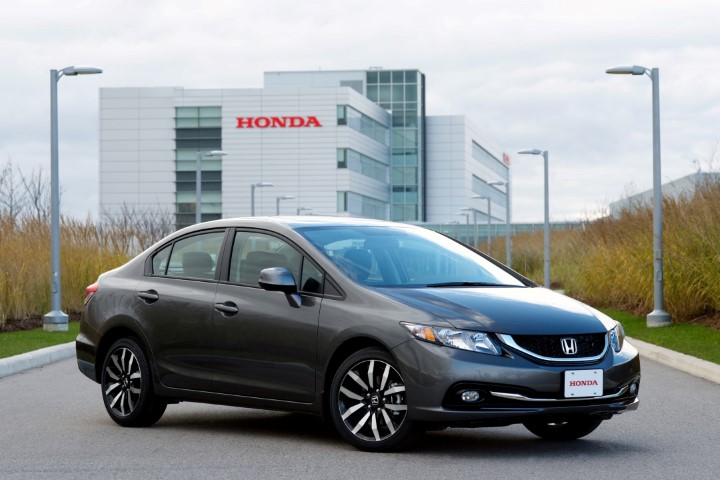 Given all the misgivings about the 2012 Honda Civic, there was quite a backlog of requests from auto writers wanting to take a 2013 model for a longer stretch than the 20-minute drive experienced a couple of weeks back.
Given all the misgivings about the 2012 Honda Civic, there was quite a backlog of requests from auto writers wanting to take a 2013 model for a longer stretch than the 20-minute drive experienced a couple of weeks back.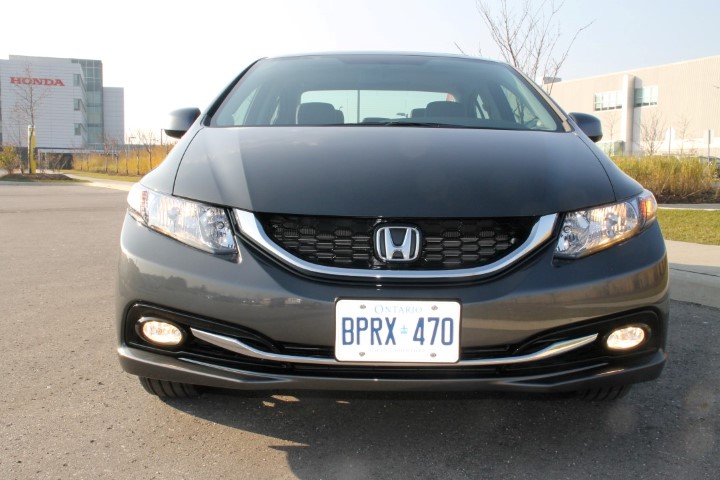 This is a car that may not turn heads with sexy, curved lines but it will impress the driver and any passenger – including from the back seat. Comfort and sightlines are improved and while this car may not amaze – it will not disappoint. The Honda design and engineering teams have made extensive yet not radical changes inside and out with content upgrades in the cabin and frame safety features that when taken into account puts the Civic in the front row of compact car contenders – in pole position.
This is a car that may not turn heads with sexy, curved lines but it will impress the driver and any passenger – including from the back seat. Comfort and sightlines are improved and while this car may not amaze – it will not disappoint. The Honda design and engineering teams have made extensive yet not radical changes inside and out with content upgrades in the cabin and frame safety features that when taken into account puts the Civic in the front row of compact car contenders – in pole position.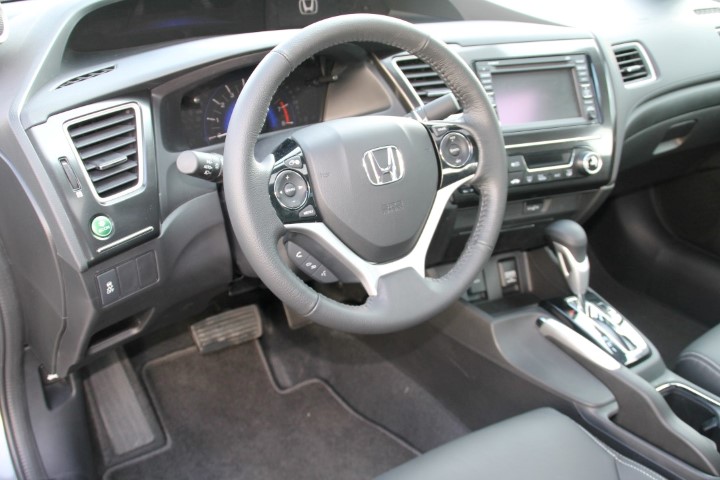 In fact, from a value-added standpoint, we’re now seeing more standard features in Hondas generally thanks to the aggressive feature-laden cars coming from other parts of Asia: Bluetooth; rear-view camera; USB/iPod interface, colour i-MID display and on this model, the Honda Satellite-Linked Navigation System – with voice recognition.
In fact, from a value-added standpoint, we’re now seeing more standard features in Hondas generally thanks to the aggressive feature-laden cars coming from other parts of Asia: Bluetooth; rear-view camera; USB/iPod interface, colour i-MID display and on this model, the Honda Satellite-Linked Navigation System – with voice recognition.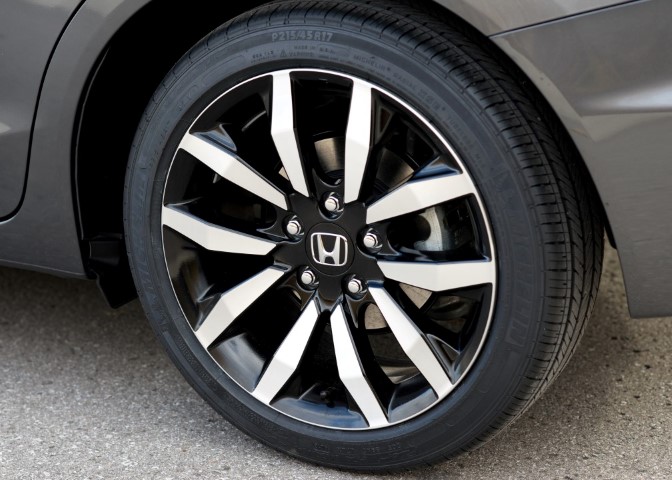 And did I mention the 17” alloys wheels on this model? Very nice!
And did I mention the 17” alloys wheels on this model? Very nice!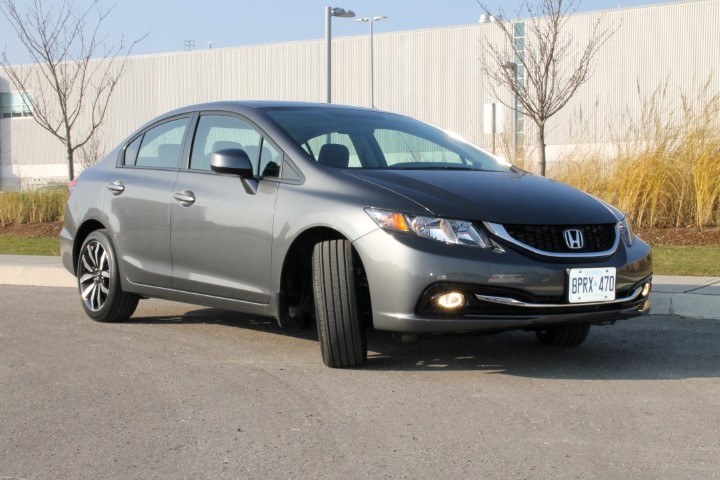
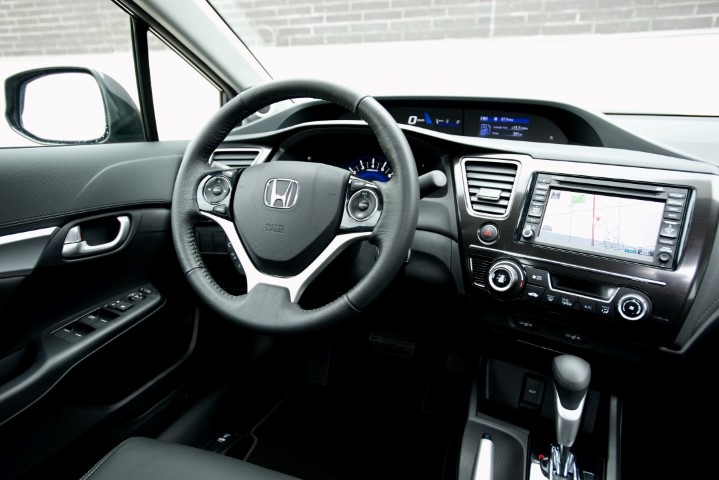 Inside the cabin the differences were immediately obvious; not as cheap-looking or heavy plastics. Softer, contoured edges with the instrument panel and controls being angled/curved slightly towards the driver, making for a more pleasant experience while driving. Peripherally, all could be seen clearly. And when driving, things were quieter. I was not overly enthusiastic about the electronic power steering (EPS), but again, being in the car for a scant 20 minutes is hardly enough time to warrant a more clear opinion. Seats too were improved with better fabric than before – and of course, for our climate, ubiquitous heated front seats were present.
Inside the cabin the differences were immediately obvious; not as cheap-looking or heavy plastics. Softer, contoured edges with the instrument panel and controls being angled/curved slightly towards the driver, making for a more pleasant experience while driving. Peripherally, all could be seen clearly. And when driving, things were quieter. I was not overly enthusiastic about the electronic power steering (EPS), but again, being in the car for a scant 20 minutes is hardly enough time to warrant a more clear opinion. Seats too were improved with better fabric than before – and of course, for our climate, ubiquitous heated front seats were present.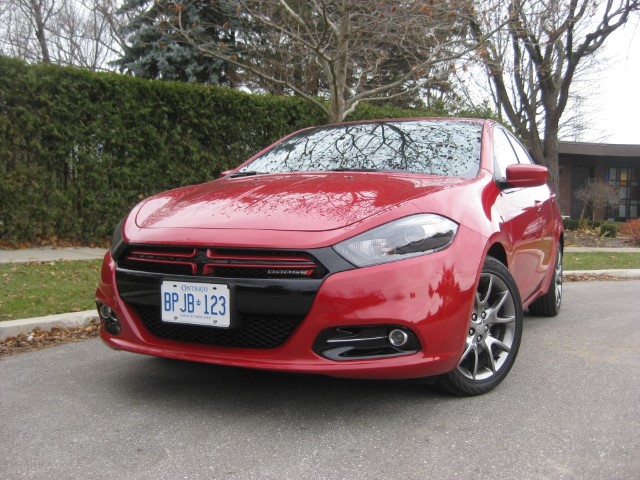 The first time I saw the Dodge Dart was at its unveiling at the 2012 North American International Auto Show in Detroit. It made quite the splash, as the Chrysler Group was going all-in to be competitive in the compact car segment. Giving the presentation was Reid Bigland, the president and CEO of the Dodge Brand and Chrysler Canada. “Price, fuel economy, reliability are only basics now – we need to do more,” preached Bigland – and after those words the Dart was revealed.
The first time I saw the Dodge Dart was at its unveiling at the 2012 North American International Auto Show in Detroit. It made quite the splash, as the Chrysler Group was going all-in to be competitive in the compact car segment. Giving the presentation was Reid Bigland, the president and CEO of the Dodge Brand and Chrysler Canada. “Price, fuel economy, reliability are only basics now – we need to do more,” preached Bigland – and after those words the Dart was revealed.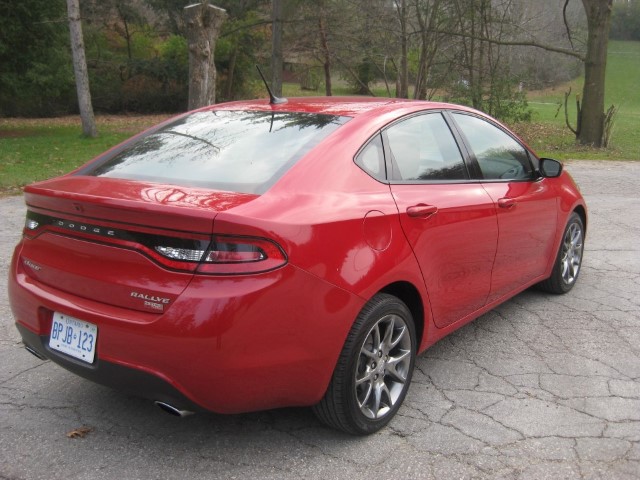 Fast-forward 10 months and I finally got my chance to test out this ground-breaking vehicle. In total the Dart has five trim levels: SE, SXT, Rallye, Limited, and the R/T. I tested the 6-speed automatic Dart SXT at AJAC’s (Automotive Journalist’s Association of Canada) “TestFest” and just recently drove the 6-speed manual Rallye for a week around the streets and highways of Toronto. The Dart’s prices can range from $15,995 all the way to $23,995 with the R/T. The SXT starts at $18,595 ($21,590 for the automatic version tested); while the Rallye starts at $19,495. They’re not too many differences, but the Rallye adds cruise control, steering-wheel audio controls, leather/metal steering wheel, chrome tailpipe, and 17-inch aluminum wheels.
Fast-forward 10 months and I finally got my chance to test out this ground-breaking vehicle. In total the Dart has five trim levels: SE, SXT, Rallye, Limited, and the R/T. I tested the 6-speed automatic Dart SXT at AJAC’s (Automotive Journalist’s Association of Canada) “TestFest” and just recently drove the 6-speed manual Rallye for a week around the streets and highways of Toronto. The Dart’s prices can range from $15,995 all the way to $23,995 with the R/T. The SXT starts at $18,595 ($21,590 for the automatic version tested); while the Rallye starts at $19,495. They’re not too many differences, but the Rallye adds cruise control, steering-wheel audio controls, leather/metal steering wheel, chrome tailpipe, and 17-inch aluminum wheels. 
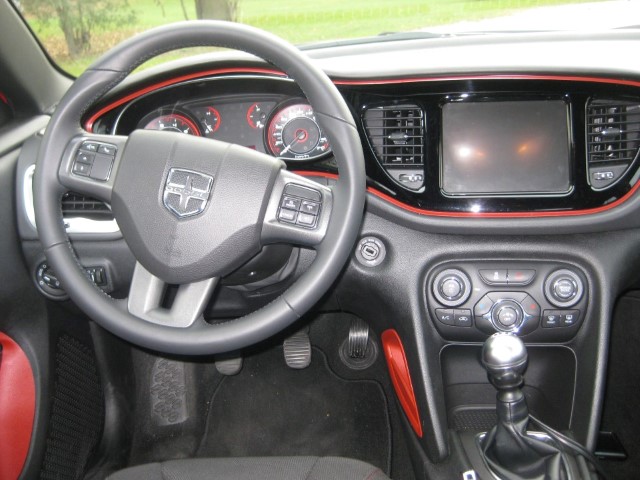 The part I loved about the interior the most is the Dart’s signature “driver-centric” layout. For me it’s important to be able to quickly locate certain dials and knobs and I find that many of the new vehicle structures have made it more complicated and challenging over the years. Trust me – I don’t want anything that looks basic, but I want to have all of the latest gadgets placed in a console that just makes sense. The Dart puts all my worries at ease with an entertainment console that’s right in your face and easy to operate with a large touch screen that has structure and order coupled with soft-touch leather and striking colours.
The part I loved about the interior the most is the Dart’s signature “driver-centric” layout. For me it’s important to be able to quickly locate certain dials and knobs and I find that many of the new vehicle structures have made it more complicated and challenging over the years. Trust me – I don’t want anything that looks basic, but I want to have all of the latest gadgets placed in a console that just makes sense. The Dart puts all my worries at ease with an entertainment console that’s right in your face and easy to operate with a large touch screen that has structure and order coupled with soft-touch leather and striking colours.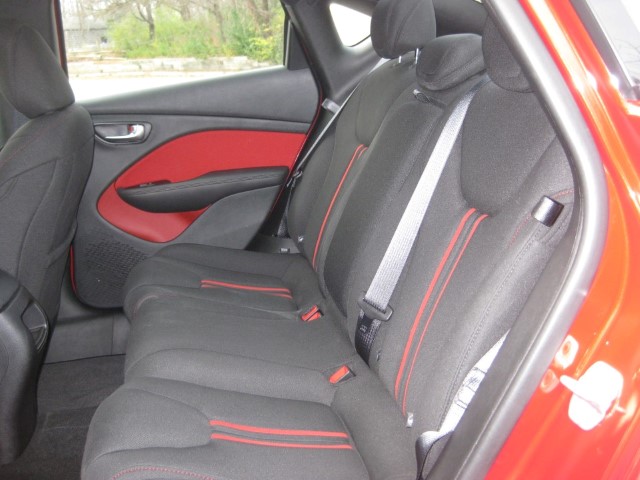
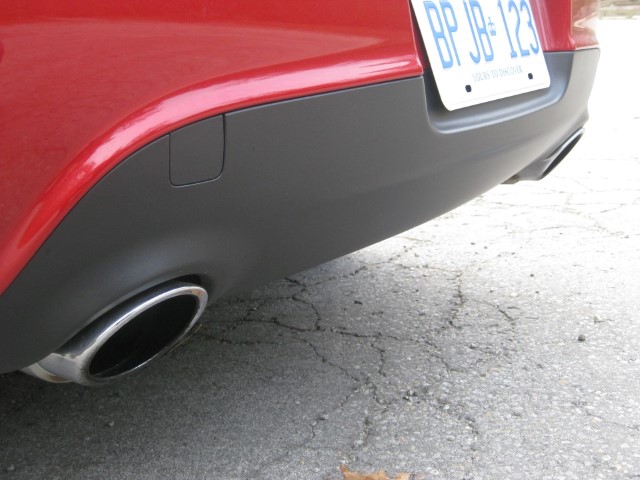 Dodge made sure that the Dart would be at par with some of the less thirsty gas sippers as well. While driving mostly throughout the city and a few highways in Toronto – the Rallye combined for 8.8L/100 km, which is quite respectable amongst its peers.
Dodge made sure that the Dart would be at par with some of the less thirsty gas sippers as well. While driving mostly throughout the city and a few highways in Toronto – the Rallye combined for 8.8L/100 km, which is quite respectable amongst its peers.